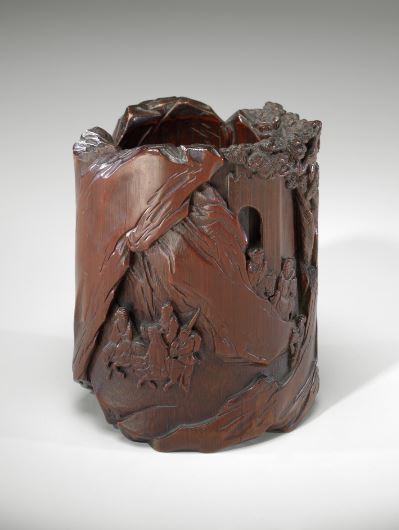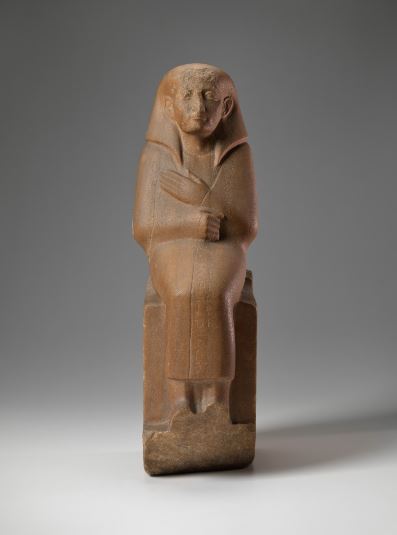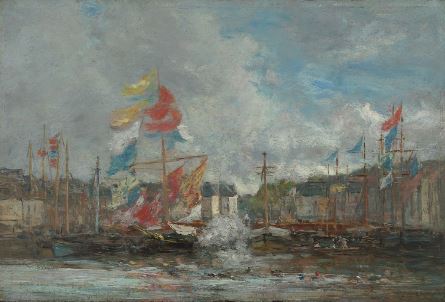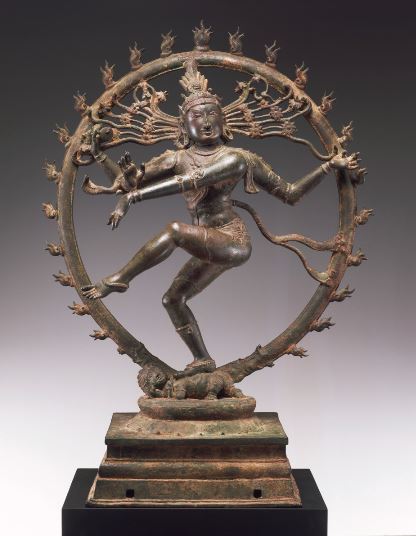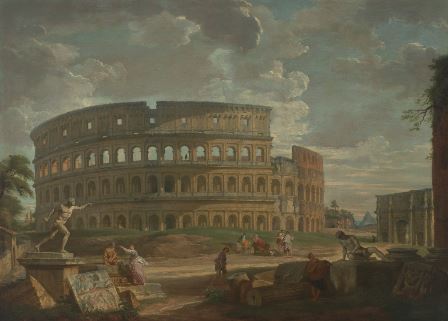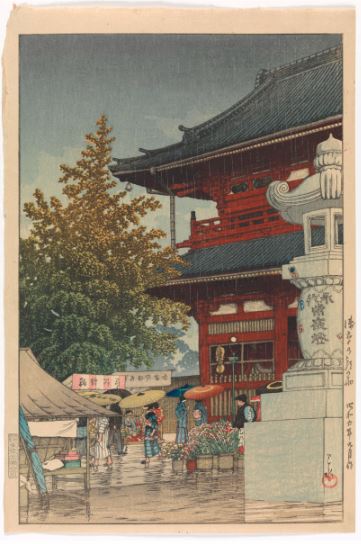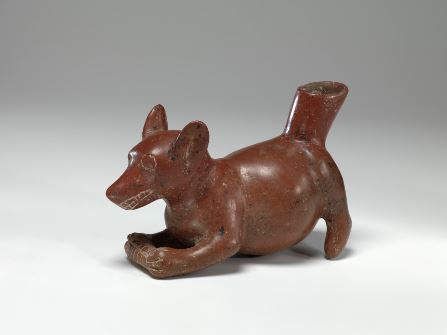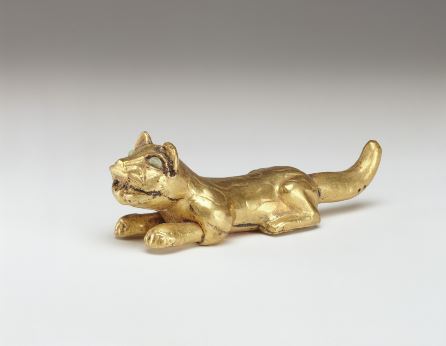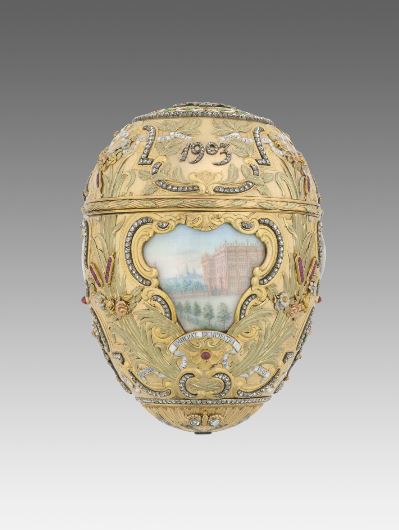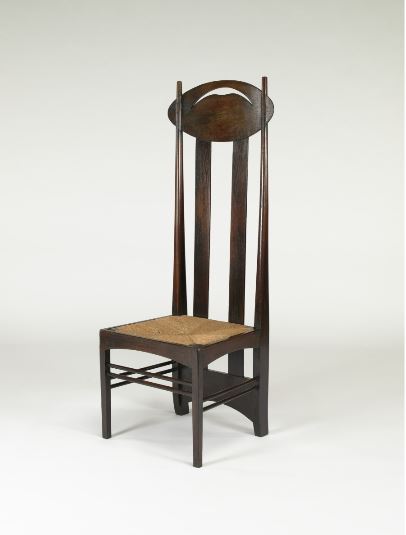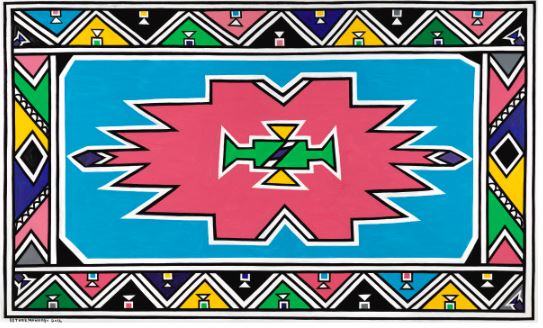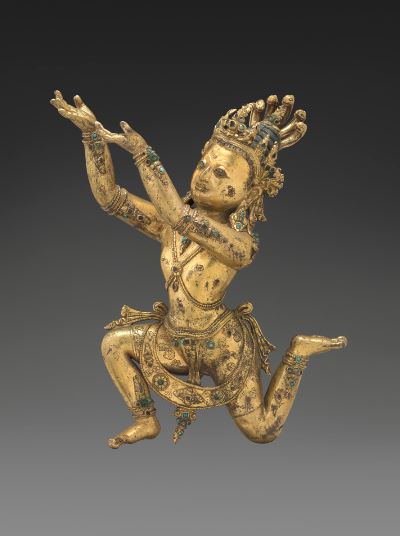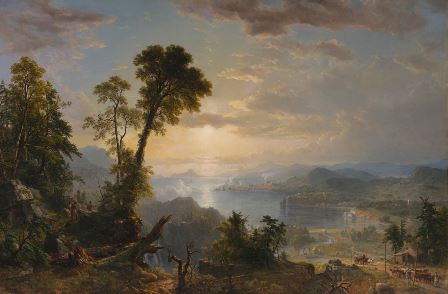As a pandemic halts even the most mundane activities outside the home, you may be reflecting on past travel opportunities with a bit of nostalgia. Whether you’ve traveled extensively, rarely, or always postponed your dreams to “some day,” you may be looking forward to the time when we can once again journey near and far without a care. For now, the plus side to social distancing is that we’ve been given time to imagine and to contemplate activities that we once took for granted. In our solitude, we can renew our passions and develop inspired to-do lists that we vow to tackle vigorously when this is over.
Put travel on that to-do list, and ask yourself where you would go tomorrow if you could go anywhere in the world. Photographer Diane Arbus has been quoted as saying, “My favorite thing is to go where I’ve never been.” If that’s your favorite thing too, consider seeing the world by way of VMFA’s permanent collection.
The following list is a sampling of the destinations you can explore through the museum’s nearly 50,000 works of art from almost every major culture in the world. And when VMFA reopens, you can visit the galleries to experience these and other great works of art in person. Until then, bon voyage!
Your Travel Itinerary
Destinations are listed in alphabetical order by present country name.
Depending on rotation schedules, some works of art may not be on view at the time of your future visit.
Cameroon
This mask and costume belong to the Bamum culture of Cameroon, a central African republic. They were used in ceremonies for events of state, harvest celebrations, and commemorations of the dead. The Bamum people regard the African Cape Buffalo as a symbol of royalty for its great strength and cunning.
China
Made from a section of bamboo, this brush holder depicts mountain travelers surrounded by ancient pine trees. The signature is that of Shen Jian, a master of this style of bamboo carving from Jiading, near today’s Shanghai.
Egypt
This ancient Egyptian statue is thirty-one inches tall and features an inscription that in part reads, “an offering that the King gives to Osiris.” If ancient Egyptian art interests you, don’t miss VMFA’s highly anticipated special exhibition Treasures of Ancient Egypt: Sunken Cities.
France
The Regatta, ca. 1858 | Eugène Boudin (French, 1824–1898) | Oil on panel | Collection of Mr. and Mrs. Paul Mellon, 83.7
Eugène Boudin was born in the Normandy region in the coastal village of Honfleur, where the Seine and English Channel converge. Boudin completed this painting the same year he met Claude Monet and encouraged Monet to begin painting directly from nature. VMFA’s French Impressionist collection will conclude its international tour later this year when it returns home to VMFA’s beautifully renovated Mellon collection galleries.
Greece
Amazons, a mythical tribe of female warriors, battle Greeks in the scenes depicted on this Greek vase. Learn more about VMFA’s Ancient Art collection and check out a 360-degree view of this work of art.
India
The Hindu god Shiva performs a cosmic dance that continually creates, sustains, and destroys the universe. This Indian work of art comes from the southern city of Thanjavur (formerly Tanjore), a popular destination for pilgrims and tourists because of its temples, palaces, and cultural institutions.
Italy
The Colosseum and the Arch of Constantine, 1736 | Giovanni Paolo Panini (Italian, 1692–1765) | Oil on canvas | Adolph D. and Wilkins C. Williams Fund, 65.27
Enjoy this fanciful scene of 18th-century Rome in which Giovanni Panini combined key architectural works such as the Colosseum and the Arch of Constantine with well-known sculptures in the foreground. Travelers populate this imaginative painting, called a capriccio. Capriccios were made as souvenirs for elite travelers on the Grand Tour.
Japan
Asakusa, a district of Tokyo, is depicted here by Kawase Hasui, one of the most prolific and influential woodblock-print artists. Hasui traveled extensively throughout his country, and the collection of nearly seven hundred Hasui prints donated to VMFA by René and Carolyn Balcer tell the story of Japan.
Mexico
Dog with a Corncob, 200 BC–AD 400 | Colima Culture | Terracotta | Arthur and Margaret Glasgow Fund, 61.31.3
This terracotta figure comes from an area in Mexico that today is the state of Colima, located near the country’s central Pacific coast. Visually amusing but symbolically complex, Dog with a Corncob may have been regarded as a shaman transformed into a dog.
Peru
Jaguar, AD 100–800 | Moche Culture | Gold, green stones | Arthur and Margaret Glasgow Fund, 59.28.9
This Pre-Columbian gold figure comes from the Moche culture in the area of present-day Lambayeque Valley in Peru. Moche warriors regarded the jaguar as a symbol of their own prowess, agility, and ferocity.
Russia
The Imperial Peter the Great Easter Egg that Tsar Nicholas II presented to Alexandra Feodorovna in 1903 commemorates the 200th anniversary of the founding of St. Petersburg. Watch close-up footage that showcases the exquisite detail of this treasured object. Only at VMFA can you visit the largest collection of Fabergé in an American art museum.
Scotland
Late 19th-century Glasgow tearooms increased in popularity and developed a distinct style under the direction of proprietors such as Catherine Cranston. A patron of artist Charles Rennie Mackintosh, Cranston furnished her tearooms with this chair and other exquisite pieces.
South Africa
ibala leSindebele (Ndebele Design), 2014 | Esther Mahlangu (Ndebele Culture, South African, born 1935) | Acrylic on linen | Adolph D. and Wilkins C. Williams Fund, 2014.224, 2014.225
Fifteen feet wide, this massive painting is one of two that were commissioned by VMFA and created onsite in 2014 by artist Esther Mahlangu, the most renowned contemporary artist among South Africa’s Ndebele people. Together the two paintings form a vibrant gateway to welcome visitors to VMFA’s African Art galleries, which display works of art from across the vast and culturally diverse continent.
Tibet
Striking a pose of adoration, this serpent king, or nagaraja, was likely positioned at the base of a large Buddha image or reliquary stupa in a Nepalese or Tibetan monastery. The style of this image is associated with the great monastery at Densatil in south-central Tibet, where a group of highly elaborate reliquaries was built between the 13th and 17th centuries.
United States
Progress (The Advance of Civilization), 1853 | Asher B. Durand (American, 1796–1886) | Oil on canvas | Gift of an anonymous donor, 2018.547
In this majestic and poignant scene of changing 19th-century America, Hudson River School artist Asher Durand dramatizes the meeting of nature and industrialization. This masterpiece entered a public collection for the first time when it was given to VMFA by an anonymous donor in 2018.
Stay connected and discover art
that consoles, inspires, and excites you.
Subscribe to receive VMFA emails that provide the latest news
on upcoming exhibitions, programs, and events.
Also, follow us on social media.

